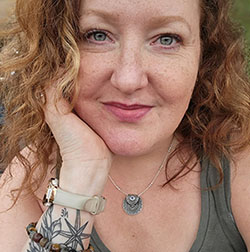The Blur of Survival
There are entire months of my life I can’t clearly remember.
When quarantine hit, our house became a pressure cooker. Seven of us—two parents, five kids, ages 50 to 4—stuck together for months, with nowhere to go and no end in sight. Every day felt like a year. I was working full-time from home, managing a high-profile position at a Fortune 500, while also managing five kids with wildly different schooling needs and zero escape routes. It was chaos in its purest form.
At some point, I stopped tracking time. I couldn’t tell you what happened in March versus June, what day of the week it was, or when one argument, one meal, one sleepless night bled into the next. I was in survival mode—physically there, but mentally shutting down. The house, the walls, the spaces I had once thought of as home became something else entirely. They weren’t just where we lived. They were where we were trapped.
The Breaking Point
I wish I could say I had some great revelation, some cinematic moment of clarity where I knew exactly what to do. I didn’t.
What I had was a glass of wine, then another, then another. At first, it was a ritual—something to mark the end of another endless day, a way to carve out a moment of escape when escape wasn’t an option. Then, it became something else. The only way I knew how to get through it.
I’ve since learned how not alone I was in that. So many of us were drowning in the uncertainty, in the exhaustion, in the relentless weight of having to hold everything together. But at the time, it felt isolating. Like I was the only one slipping, like I was the only one who couldn’t keep pace with the life I was supposed to be managing.
The Moment I Snapped
One night, standing in my kitchen—barefoot in a mess of Legos, half-eaten snacks, and an unrelenting wave of noise—I realized: I couldn’t breathe.
Every inch of our home had been taken over by survival—by function, by necessity, by the needs of everyone but me. The dining room was a classroom. The living room was a daycare. My bedroom—my last supposed sanctuary—had become a dumping ground for everything that didn’t fit elsewhere. I had erased myself from my own home without even realizing it.
And I knew if I didn’t claim space for myself—physically, emotionally, mentally—I wasn’t going to make it.
Reclaiming Space, Reclaiming Myself
That night, after the house finally went quiet, I made a decision. If I couldn’t leave, I had to carve something out for myself inside these walls.
I started small. I cleared off a single corner of a table and claimed it as mine. No toys, no clutter, no crumbs from a meal I didn’t get to eat hot. Just a space where I could sit and exist. Then, I started moving furniture—not for function, but for feeling. I rearranged the living room to make it feel less like a daycare and more like a space for actual humans. I pulled out the art I had shoved in closets and started hanging pieces that made me feel something again.
Designing a Home That Gave Back
Slowly, I started designing for more than just survival. I needed a home that gave something back to me.
- I created zones of peace, places where no one else was allowed to pile things or take over. A chair in the corner with a lamp. A bedside table with space for a book. A kitchen counter that wasn’t covered in school supplies and granola bar wrappers. (I literally taped it off with painter’s tape and sharpie. There are photos somewhere.)
- I stopped defaulting to practicality and started making design choices based on joy—hanging 20yo posters, framing my grandmother’s handwritten sheet music, creating landscapes of warm light, layering in textures that felt soft and comforting instead of just there.
- I made my bedroom a non-negotiable sanctuary, free from chaos, because if I couldn’t control anything else, I could control that. A good solid door lock works wonders, FYI.
And over time, something shifted. My home stopped feeling like a place I was trapped in and started feeling like a place I could exist in again. I started breathing differently inside these walls. Hope started to become…. a possibility?
What Comes Next?
I know what it feels like to lose yourself in a space that no longer feels like yours. I know what it’s like to look around and feel like you don’t belong in the one place you’re supposed to feel safe.
Next time, I’ll talk about how I took these lessons into the world—how what I learned in that suffocating, too-full house became the foundation for helping others reclaim their spaces, too. Except for an unexpected left turn.

